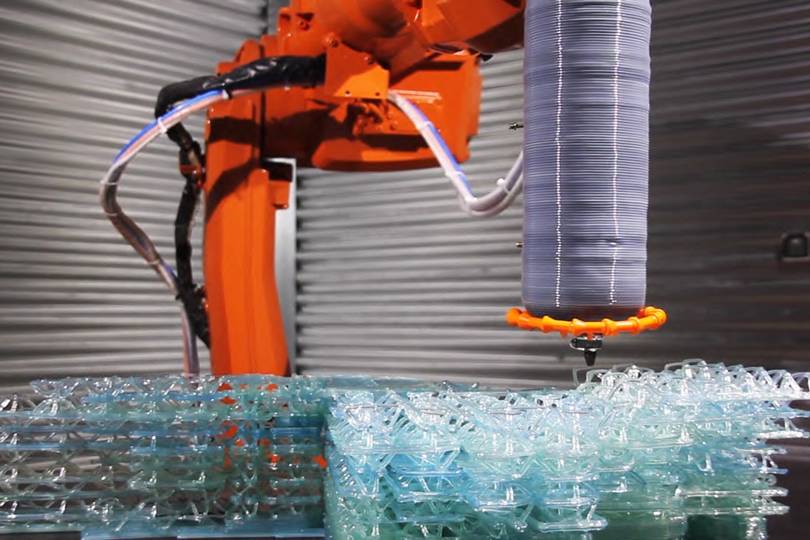


This chair was built by a robot from a 2.4km line of PDA plastic. The Voxelchair v1.0 is modelled on the S-shaped Panton from 1967, which was the first moulded plastic chair. The London-based designers, Manuel Jiménez Garcia and Gilles Retsin, say their process, known as "air printing", shortens the amount of time it takes to 3D print an object of this size and complexity from one week to one day.
"Large-scale printing is usually slow and costs a lot of money," says Retsin, 32. "This is only the prototype and it was printed in a day. There are many ways we can optimise that process."

The challenge of air printing is ensuring the design is perfect so the robot doesn't collide with what it's already printed. This is resolved by designing a particular curve within voxels - the 3D version of pixels - that can be rotated in any direction, rather than slicing an object to be printed layer by layer. Like 2D images, objects can be built in high or low resolution. "People can take into account more detail, more data and more control, and that allows them more freedom to experiment with complexity and special forms," Retsin adds.
Fifty years after the Panton's launch, Retsin and Garcia are developing further, more durable versions of the chair. The pair, alongside a research team at University College London, now want to scale up production and create 3D-printed building parts using concrete and insulation foam. Their next piece, said to fill an entire room, will be revealed at the MIT Arcadia conference in November.
Source : Wired
